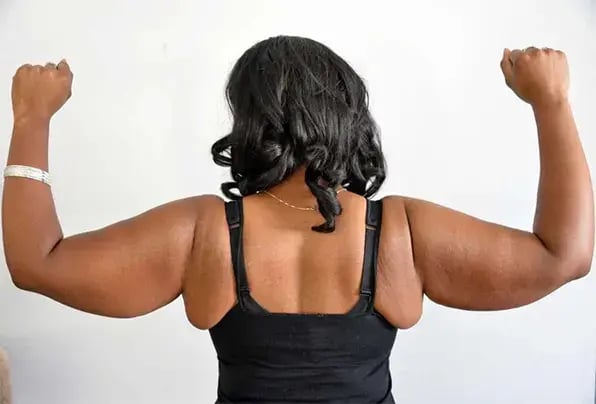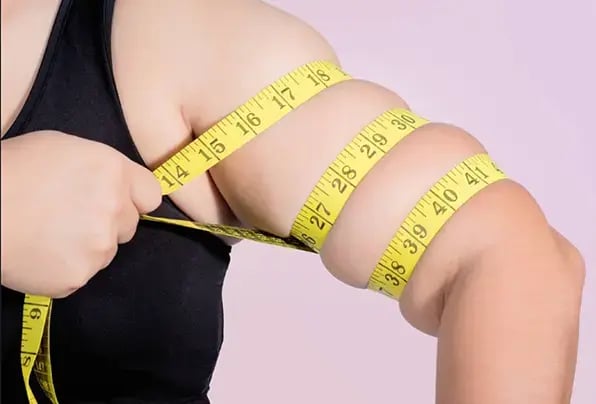What is Arm Lipedema and How Do You Treat it?
Treatment Options of Arm Lipedema
Arm lipedema, a condition characterized by abnormal fat accumulation and swelling in the arms, poses significant challenges for affected individuals. Unlike typical fat cells, those affected by lipedema do not respond to conventional weight loss methods, leading to persistent swelling in the arms despite efforts to reduce weight through diet and exercise.
What Causes Arm Lipedema?
Arm lipedema, a condition characterized by abnormal fat accumulation and swelling in the arms, is primarily attributed to critical hormone disturbances. These hormonal imbalances, commonly experienced during puberty, perimenopause, menopause, pregnancy, or hormone removal surgery, play a significant role in the onset and progression of the disorder. While genetic factors often predispose individuals to lipedema, they can also manifest following surgeries or trauma, further complicating its etiology. Therefore, understanding and addressing these hormonal fluctuations is crucial in effectively managing and treating arm lipedema.

How Does Arm Lipedema Affect a Patient’s Quality of Life?
The Physical Pains of Lipedema
Chronic pain is a primary symptom of arm lipedema, making routine activities such as showering, working, or even wearing fitted clothing incredibly painful. The swelling associated with lipedema restricts movement, leading to a sedentary lifestyle that exacerbates the condition over time. Moreover, the altered gait and posture adopted by individuals to accommodate the swelling can cause further strain on joints and muscles, compounding the physical challenges posed by the condition.
Lipedema causes a lot of pain. Imagine feeling soreness all the time, from when you wake up until you go to bed. Even gentle touches or wearing clothes can hurt a lot.
It's like carrying around heavy bags on your arms and legs all day. This makes it hard to move and do normal things like showering or working. By the end of the day, you're so tired that all you want to do is rest.
Sometimes, the extra fat builds up on the insides of your legs and knees. This makes it tough to stand or walk for long. You might even have to change how you walk to avoid touching your knees. This can hurt your knees and ankles over time.
The pain keeps you from moving around much, so you end up sitting a lot. But sitting too much makes the swelling and pain worse. It's like a cycle that keeps going around. And if it goes on for too long, it can even cause serious heart problems later on.
Our mission is to create a world where every investment in modern beauty is Worth It.
Let's keep in touch
Get updates of the treatments you are interested
Mental and Emotional Suffering Caused by Lipedema
Lipedema doesn't just hurt your body; it can mess with your mind and feelings too. Imagine not knowing what's going on with your arms and legs, why they're not changing even though you're trying to eat better and exercise. It's frustrating and can make you feel upset, sad, and hopeless.
When you're uncomfortable with how you look and feel, you might start avoiding going out or being around people. This can make you feel even more down and lonely. But the good news is, if you find the right doctor, they can help figure out what's happening and give you treatment that can make both your body and your feelings better.

How Do You Get Rid of Lipedema in Your Arms?
To get rid of lipedema in your arms, you might need surgery because diet and exercise don't usually work for it. This surgery uses a special kind of liposuction to target the bad fat cells and take them out for good. After the surgery, you'll feel lighter, move easier, and have less pain.
Before and after the surgery, you might work with a physical therapist to help with any pain and make it easier to move around. Also, your doctor might suggest eating foods that fight inflammation, like cutting down on sugary stuff and processed foods.
But here's the thing: even though the surgery gets rid of most of the bad fat cells, it might not catch them all. And sometimes, even after surgery, the problem can come back, especially if there are changes in your hormones.
Lipedema Surgery vs. Liposuction
Differentiating Between Lipedema and Lymphedema

The Importance of Specialized Diagnosis and Treatment
Treatment Options of Arm Lipedema
Arm lipedema, a condition characterized by abnormal fat accumulation and swelling in the arms, poses significant challenges for affected individuals. Unlike typical fat cells, those affected by lipedema do not respond to conventional weight loss methods, leading to persistent swelling in the arms despite efforts to reduce weight through diet and exercise.
What Causes Arm Lipedema?
Arm lipedema, a condition characterized by abnormal fat accumulation and swelling in the arms, is primarily attributed to critical hormone disturbances. These hormonal imbalances, commonly experienced during puberty, perimenopause, menopause, pregnancy, or hormone removal surgery, play a significant role in the onset and progression of the disorder. While genetic factors often predispose individuals to lipedema, they can also manifest following surgeries or trauma, further complicating its etiology. Therefore, understanding and addressing these hormonal fluctuations is crucial in effectively managing and treating arm lipedema.

How Does Arm Lipedema Affect a Patient’s Quality of Life?
The Physical Pains of Lipedema
Chronic pain is a primary symptom of arm lipedema, making routine activities such as showering, working, or even wearing fitted clothing incredibly painful. The swelling associated with lipedema restricts movement, leading to a sedentary lifestyle that exacerbates the condition over time. Moreover, the altered gait and posture adopted by individuals to accommodate the swelling can cause further strain on joints and muscles, compounding the physical challenges posed by the condition.
Lipedema causes a lot of pain. Imagine feeling soreness all the time, from when you wake up until you go to bed. Even gentle touches or wearing clothes can hurt a lot.
It's like carrying around heavy bags on your arms and legs all day. This makes it hard to move and do normal things like showering or working. By the end of the day, you're so tired that all you want to do is rest.
Sometimes, the extra fat builds up on the insides of your legs and knees. This makes it tough to stand or walk for long. You might even have to change how you walk to avoid touching your knees. This can hurt your knees and ankles over time.
The pain keeps you from moving around much, so you end up sitting a lot. But sitting too much makes the swelling and pain worse. It's like a cycle that keeps going around. And if it goes on for too long, it can even cause serious heart problems later on.
Our mission is to create a world where every investment in modern beauty is Worth It.
Let's keep in touch
Get updates of the treatments you are interested
Mental and Emotional Suffering Caused by Lipedema
Lipedema doesn't just hurt your body; it can mess with your mind and feelings too. Imagine not knowing what's going on with your arms and legs, why they're not changing even though you're trying to eat better and exercise. It's frustrating and can make you feel upset, sad, and hopeless.
When you're uncomfortable with how you look and feel, you might start avoiding going out or being around people. This can make you feel even more down and lonely. But the good news is, if you find the right doctor, they can help figure out what's happening and give you treatment that can make both your body and your feelings better.

How Do You Get Rid of Lipedema in Your Arms?
To get rid of lipedema in your arms, you might need surgery because diet and exercise don't usually work for it. This surgery uses a special kind of liposuction to target the bad fat cells and take them out for good. After the surgery, you'll feel lighter, move easier, and have less pain.
Before and after the surgery, you might work with a physical therapist to help with any pain and make it easier to move around. Also, your doctor might suggest eating foods that fight inflammation, like cutting down on sugary stuff and processed foods.
But here's the thing: even though the surgery gets rid of most of the bad fat cells, it might not catch them all. And sometimes, even after surgery, the problem can come back, especially if there are changes in your hormones.
Lipedema Surgery vs. Liposuction
Differentiating Between Lipedema and Lymphedema








